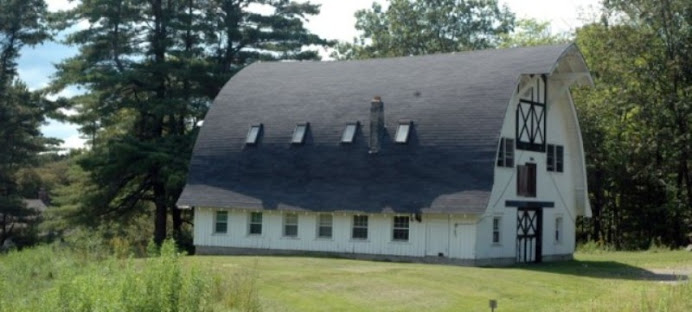As we continue to grow our Arts in Education programming, we are working to share with you the results of these amazing guest visits to regional schools. Teachers & Writers Collaborative teaching writer Janice A. Lowe just completed a two week residency in the Germantown High School visiting the classes of Stacy Dore, Karen Katz, and Lynn Polidoro. We will have photos, student work, and write-ups on this unit to share in the coming weeks. Janice stayed at the Colony for the two weeks as the T&W visiting fellow and was able to do some of her own work while at the Colony as well as share her process and insights with regional students.
To date we have placed visiting artists and writers into schools in Chatham, Germantown, and Hudson. Here is a write-up with photos from a residency last fall with Millay artist in residence Jonathan Skinner:
Chatham HS Students Map Campus Soundscape with Guest Poet from Millay Colony
Art and English students shared a unique opportunity to experience their school campus' “soundscape” with guest poet Jonathan Skinner. Skinner is a professional writer, editor, and college professor who focuses on the creative and critical intersections between writing and ecology. Prior to taking the students out on a “sound walk” behind the school, Skinner led a classroom discussion on the relationships between sound, people, and poetry.
“We don’t have earlids, we have eyelids so we can close our eyes, but we don’t have earlids so we don’t listen to everything we hear,” said Skinner in explaining the purpose of the day's exercise, which was to take time to listen to and truly experience all the sounds happening at a particular place and moment, and capture them using notation. He shared several examples of poetic works in which the author uses sound notation and onomatopoeia (words that sound similar to the noises they describe) to tap into a particular soundscape and evoke a sense of place, mood, or experience.
A soundscape is the combination of sounds that arise from an environment and can include both natural sounds from animals, weather, and other elements; and sounds created by humans, such as voices, music, and mechanical
 sounds.
sounds.“Ears open, pens out - make note of everything we hear as we walk,” Skinner directed as he led the group out the back of the school and down a wooded trail along the pond behind CHS. There, Skinner had the students pause and stand silently, listening and writing down every sound they heard, whether it was the honking of geese on the water, the rustle of wind through the leaves, or the hum of a distant engine. Later, Skinner asked the students to categorize each sound they had observed by how close or far away the sound was, how often they heard it, whether it was natural or manmade, soft or loud, and appealing or unpleasant.
Armed with this data, the group returned indoors where Skinner gave the students some final food for thought on how they could artistically map the soundscape they had just experienced. Later, the art and English students returned to their respective classrooms to do just that, with the English students creating sound maps through poetry and the visual art students through drawing.
This interdisciplinary exercise was made possible through the collaborative efforts of art teacher Judith Harrigan, English teacher Jodi Sullivan, and the Millay Colony for the Arts in Austerlitz, at which Skinner was spending a month in residence. Cara Benson, program manager for the Millay Colony, also contributed as a guest educator. Students involved were from the Senior Fine Arts Workshop and English 11 Pre AP classes.
Some student work from this unit:
Hannah Bervy - Radial Sound Map
Michaela Hanson - Sound Abstraction
Student poems to follow!
For more information on our School Programs please contact Caroline Crumpacker at director@millaycolony.org.
www.millaycolony.org/education



No comments:
Post a Comment